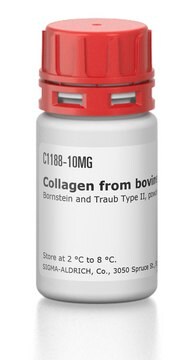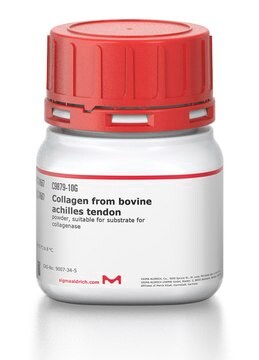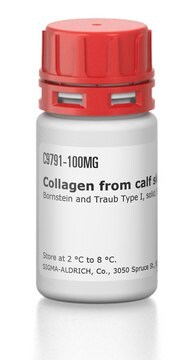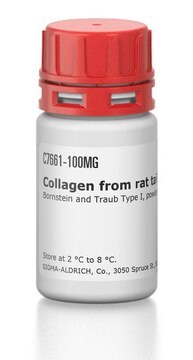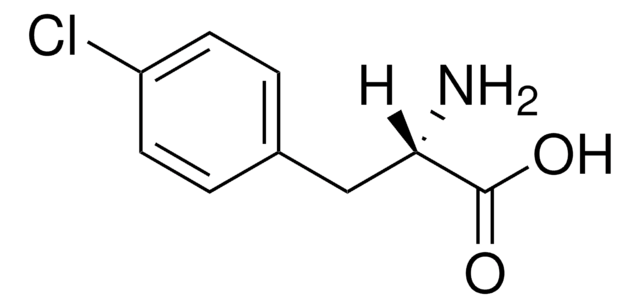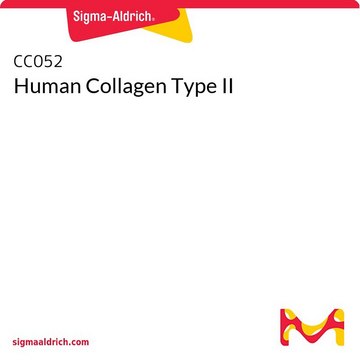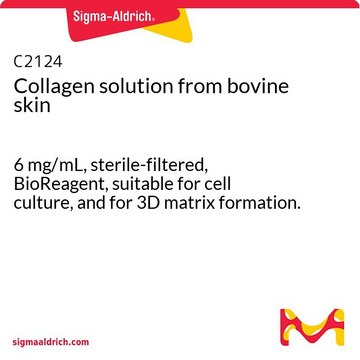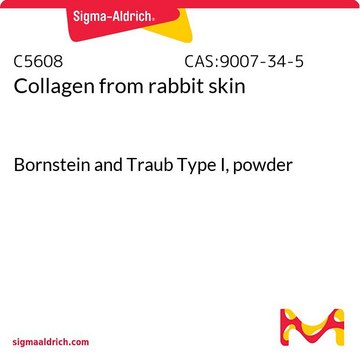C9301
Chicken Collagen Type II
from chicken sternal cartilage, powder, suitable for cell culture
About This Item
Productos recomendados
Nombre del producto
Collagen from chicken sternal cartilage, Type II (Miller), powder, BioReagent, suitable for cell culture
biological source
chicken (Sternal cartilage)
Quality Level
type
Type II (Miller)
product line
BioReagent
form
powder
packaging
glass bottle of 100 mg
poly bottle of 25 mg
glass bottle of 5 mg
concentration
60-80% (biuret)
technique(s)
cell culture | mammalian: suitable
surface coverage
6‑10 μg/cm2
solubility
acetic acid: 0.5-2.0 mg/mL (Dissolve for several hours at 2-8 °C, occasionally swirling.)
UniProt accession no.
binding specificity
Peptide Source: Fibrinogen
shipped in
wet ice
storage temp.
2-8°C
Gene Information
chicken ... COL2A1(395069)
General description
Application
- in enzyme–linked immunosorbent assay (ELISA).
- chondrocyte-mediated tissue production in vitro.
- induction, treatment, and assessment of collagenα induced arthritis (CIA).
- cell proliferation assay.
- as a coating for cell culture surfaces.
Biochem/physiol Actions
Features and Benefits
Other Notes
Preparation Note
¿No encuentra el producto adecuado?
Pruebe nuestro Herramienta de selección de productos.
Storage Class
11 - Combustible Solids
wgk_germany
WGK 1
flash_point_f
Not applicable
flash_point_c
Not applicable
ppe
Eyeshields, Gloves, type N95 (US)
Elija entre una de las versiones más recientes:
¿Ya tiene este producto?
Encuentre la documentación para los productos que ha comprado recientemente en la Biblioteca de documentos.
Los clientes también vieron
Artículos
Cancer stem cell media, spheroid plates and cancer stem cell markers to culture and characterize CSC populations.
Extracellular matrix proteins such as laminin, collagen, and fibronectin can be used as cell attachment substrates in cell culture.
Nuestro equipo de científicos tiene experiencia en todas las áreas de investigación: Ciencias de la vida, Ciencia de los materiales, Síntesis química, Cromatografía, Analítica y muchas otras.
Póngase en contacto con el Servicio técnico